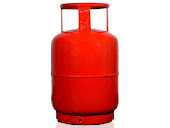SAUDI ARAMCO TO PICK UP 10 PERCENT IN IOC REFINERY
Saudi Aramco, the world's largest producer and exporter of crude, may invest about Rs 3,000 crore to pick up 10 percent stake in Indian Oil Corporation (IOC) upcoming refinery at Paradip. The Saudi Aramco-IOC deal may be clinched later this week during prime minister Manmohan Sing¬h's three-day visit to Saudi Arabia beginning this Saturday. Petroleum minister Murli Deora and top honchos from country's upstream and oil marketing companies will be part of prime minister's delegation.India will offer up to 10 per cent equity stake, amounting close to Rs 3,000 crore in the Paradip project to Saudi Arabia's national oil company, said a petroleum ministry official.
"We have already sent our proposal to them. The deal is likely to be sealed when petroleum minister visits the country next week," the official said. Saudi Aramco is interested in both refining and distribution of petroleum products. But India's offer would be limited to participation in refining sector, he added.Saudi Aramco did not respond to an e-mail query sent by Financial Chronicle seeking timelines for concluding the deal with IOC. S V Narasimhan, director (finance) of IOC did not respond to repeated calls made by FC.Sarthak Behuria, chairman at IOC had earlier said the Paradip refinery would be commissioned in March 2012. "Unless we commission it by March 2012, we will not be eligible for the tax holiday under government rules," Behuria added.
Saudi Aramco's participation in IOC project will be good for both not only from financing perspective, but it will enhance perspective for sourcing of products and equipment range, said Arvind Mahajan, executive director of KPMG.In addition, Aramco Overseas Company (AOC), the subsidiary of Saudi Aramco, has recently opened its office in Gurgaon. "It is primarily a regional sourcing office, with possible transformation into a full procurement office in future," said Sultan N Al-Ghadery, manager of purchasing, logistics & contracting for Europe and Far East at AOC."Saudi Aramco is conducting business with major Indian manufacturers for several years, mainly handled by our headquarters in Dhahran, Saudi Arabia," Al-Ghadery said.In addition, India will also offer participation in the proposed ONGC's petrochemical projects in Mangalore and Dahej.
Siddhartha P Saikia, New Delhi.....
Financial Chronicle | Mint | Hindustan Times |
#END
This Message was sent from Indian Oil Messaging Gateway, New Delhi, India. The information contained in this electronic message and any attachments to this message are intended for the exclusive use of the addressee(s) and may contain proprietary, confidential or privileged information. If you are not the intended recipient, you should not disseminate, distribute or copy this e-mail. Please notify the sender immediately and destroy all copies of this message and any attachments.




